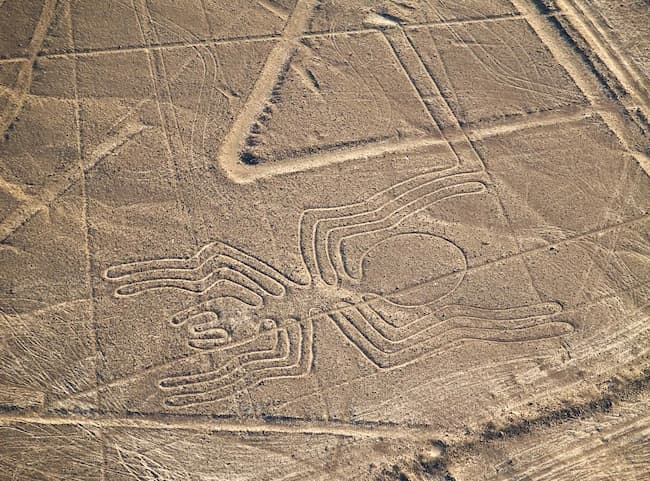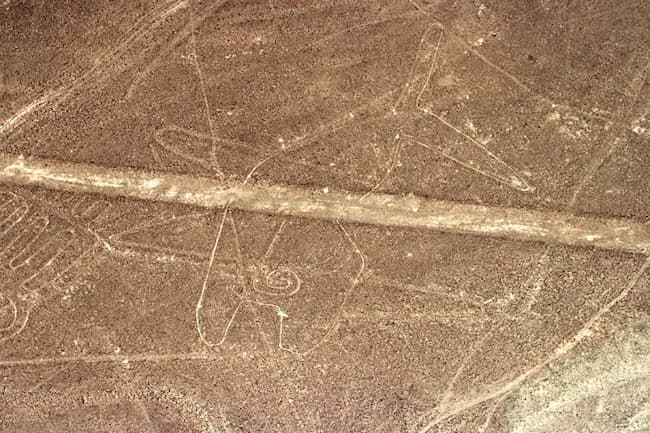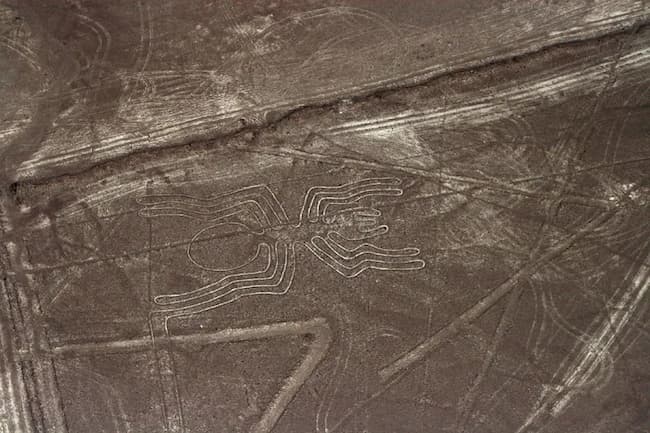In the heart of the vast Nazca Desert in southern Peru, a collection of ancient geoglyphs etched into the arid landscape has captured the world’s imagination for centuries.

These enigmatic creations, known as the Nazca Lines, offer a fascinating glimpse into the distant past and continue to be a source of intrigue and speculation. Join us on a journey to unravel the secrets of the Nazca Lines and explore the mysteries they hold.
The Nazca Lines: A Cryptic Marvel
Boldly contrasting against the barren desert backdrop, the Nazca Lines are an extraordinary array of intricate designs and forms etched into the Earth’s surface. Spanning over 50 square miles, these geoglyphs depict an astonishing array of animals, plants, humans, and geometric shapes. From soaring birds to labyrinthine patterns, the sheer diversity of the lines is a testament to the creativity and ingenuity of their creators.
An Ancient Puzzle
The origin and purpose of the Nazca Lines have perplexed experts for centuries. Crafted by the Nazca people between 500 BC and 500 AD, the lines remain shrouded in mystery. Were they ceremonial pathways, elaborate irrigation systems, or perhaps artistic expressions that held deep cultural significance? Despite numerous theories, the true purpose of the lines continues to elude us.
Celestial Connections

One prevailing theory suggests a strong astronomical connection. The Nazca people may have crafted these massive designs as a way to communicate with celestial forces or as markers for astronomical events. The alignment of certain lines with solstices and equinoxes lends credence to this hypothesis, hinting at an ancient civilization’s profound understanding of the cosmos.
Spiritual Significance
The lines’ enigmatic nature has led to theories rooted in spirituality and religious rituals. Some speculate that the Nazca Lines were sacred pathways meant to be traversed during rituals, connecting the terrestrial world with the divine. This interpretation aligns with similar practices in cultures across the globe, highlighting the universal human inclination towards the spiritual.
The Art of Creation
Viewed from above, the Nazca Lines transform into intricate masterpieces. The process of creating these enormous designs involved meticulously removing the reddish-brown iron oxide-coated pebbles that cover the surface of the Nazca Desert, revealing the lighter-colored earth beneath. The lines’ remarkable precision, despite the challenges posed by the vast terrain, serves as a testament to the Nazca people’s craftsmanship.
Preserving Ancient Treasures

As the Nazca Lines continue to captivate the modern world, preserving these fragile archaeological wonders becomes paramount. The delicate balance between allowing access for study and protecting the lines from human impact is a challenge that requires careful consideration and innovative solutions.
Conclusion: Echoes of a Bygone Era
The Nazca Lines stand as an enduring testament to the intricate relationship between humans and their environment. These enigmatic creations transcend time, inviting us to ponder the motivations, beliefs, and aspirations of an ancient civilization that thrived in the midst of a desolate desert. As we gaze upon the Nazca Lines, we are reminded that the past is a tapestry woven with the threads of mystery and wonder.

FAQs
FAQ 1: How were the Nazca Lines discovered?
The Nazca Lines were first brought to international attention by archaeologist Toribio Mejia Xesspe in the 1920s. However, local inhabitants were likely aware of their existence for centuries.
FAQ 2: Can visitors view the Nazca Lines from the ground?
While some of the simpler lines can be seen from ground level, the true scale and complexity of the geoglyphs are best appreciated from the air.
FAQ 3: Are there any ongoing research efforts focused on the Nazca Lines?
Yes, ongoing research aims to shed light on various aspects of the Nazca Lines, including their purpose, creation methods, and cultural significance.
FAQ 4: How were the Nazca Lines created without aerial technology?
The Nazca people likely used simple tools such as wooden stakes and ropes to create the lines. The careful planning and execution of these designs demonstrate their advanced understanding of geometry.
FAQ 5: Are there any modern threats to the preservation of the Nazca Lines?
Tourism, urban development, and climate change pose potential threats to the preservation of the Nazca Lines. Efforts are underway to ensure their protection for future generations.

